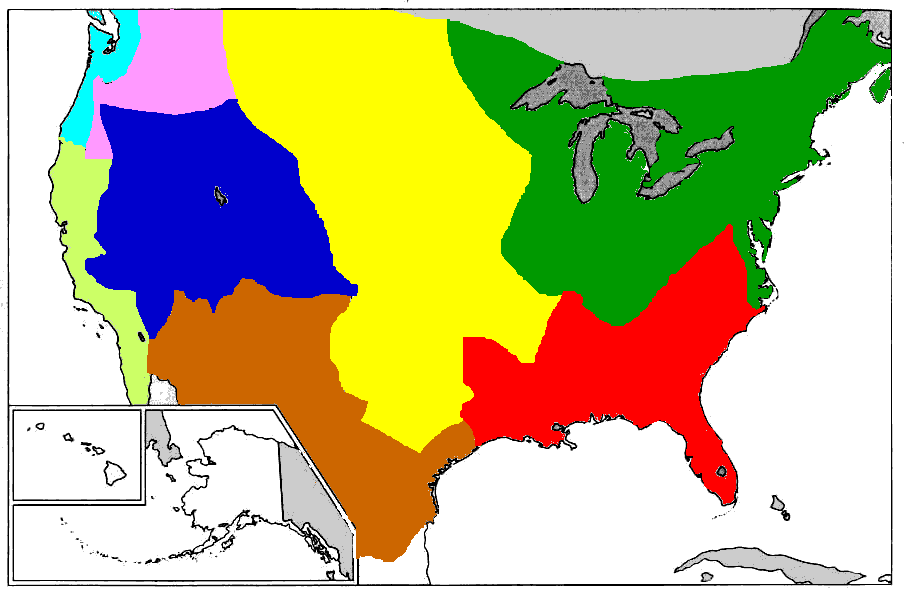|
Cultural Areas at First Contact
This map depicts the general areas occupied at
First Contact, so the "boundaries" are only an approximation. It
does, however, show which groups were united by a similar language and
which ones lived in the same area, thus providing some basis for
understanding the shifting alliances.
|

Of these eight cultural areas, three involved mass
removals of natives to what is now Oklahoma. I have found single
examples for two other groups, none for the remaining three.
|
|
Northeast
|
Shown in Dark
Green. Home of the Iroquois and Algonquin groups. Some remnants
of the Iroquois were removed to the Quapaw Tract. Some Algonquins
were also placed in the Quapaw Tract but others were relocated to
Oklahoma Territory. This link
provides a more detailed map and chart of
nations/tribes/bands moved from the northeast to what is now Oklahoma. |
|
Southeast
|
Shown in Red. Home
of many different language families, including Algonquin, Caddoan,
Iroquoian (Cherokee), Muskogean (Chickasaw, Choctaw, Creek and
Seminole), and Siouan. This is the group that walked the infamous
Trail of Tears to Indian Territory. Please check the
corresponding ITGenWeb site for more information about each such group. |
| Great Plains |
Shown in
Yellow. Algonquian, Athapascan, Caddoan, Siouan, and Uto-Aztecan.
Many of these were relocated to Oklahoma Territory through a series of
moves from one reservation to another. There are so many |
| Southwest |
Shown in Brown.
Athapascan, Penutian, Yuman, and Uto-Aztecan. Some Apache
were removed to the southwestern part of Oklahoma Territory. |
| Great Basin |
Shown in Dark Blue.
Primarily Uto-Aztecan with a few Yuman. No examples of relocation
to Oklahoma found so far. |
| Plateau |
Shown in Pink.
Penutian and Salish. The Modoc were relocated to the Quapaw Tract. |
| Northwest |
Shown in Light
Blue. Na-dene and Penutian. No examples of relocation to Oklahoma
found so far. |
| California |
Shown in Light
Green. Athapaskan, Hokan, Penutian, and Uto-Aztecan. No
examples of relocation to Oklahoma found so far. |
Status: Only one of the individual
area maps is online
with its corresponding chart.
This section has been the subject
of very few queries so has been given a low priority.
Questions or comments? E-mail: Sharon McAllister
|




